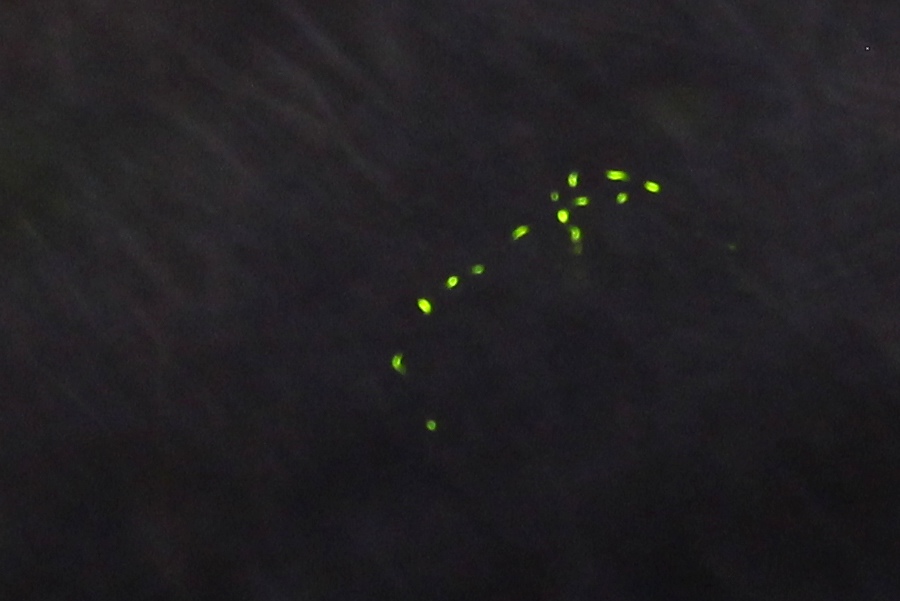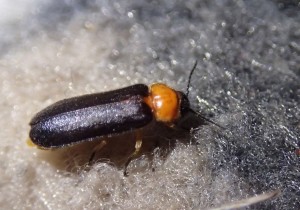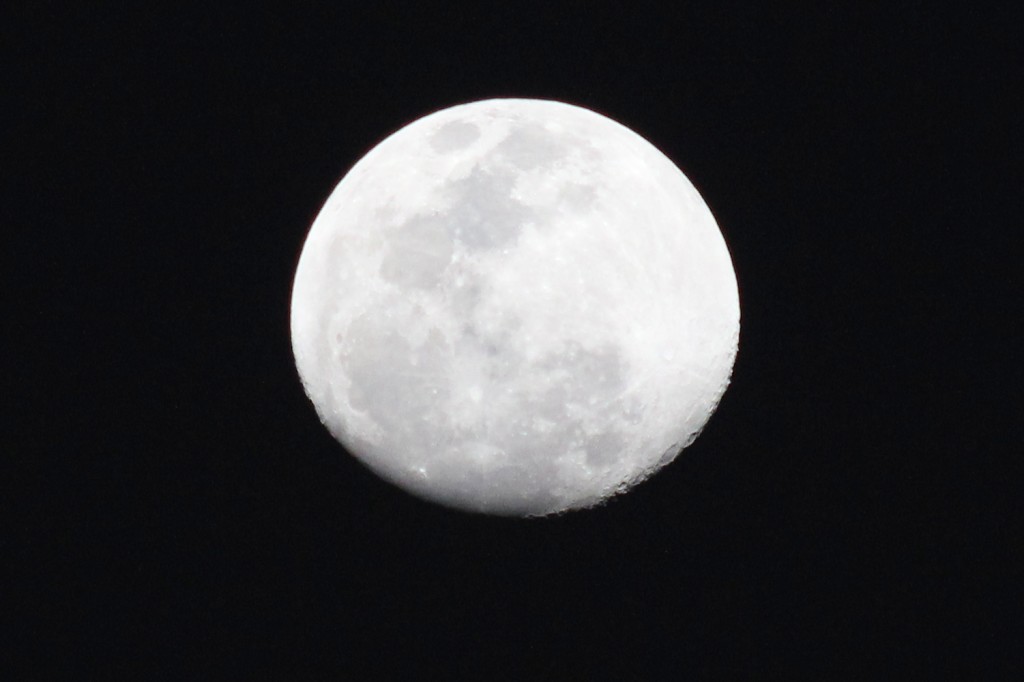
Firefly flight path. During a 25 second exposure, this firefly was flashing every 1.5 seconds, each flash about 0.2 seconds. Malcolm Tattersall photo.
Two recent trips demonstrate the level of community interest in wildlife experiences that are available right under, or right in front of, our noses. In response to some basic promotion in the Sun and the Townsville Bulletin, our largest groups of the year turned up for our Rowes Bay low tide walk in August and October’s firefly evening on the river bank.
Many who came down to the river just before sunset had rarely, if ever, seen fireflies before and were unaware of how they can light up the river during spring and early summer. Our first such event was held in 2013 and the display this year did not quite match that experience, but nonetheless the mood was one of delight not disappointment. The lower number this year was very probably due to our excessively long dry period (now 18 months since a decent rainfall?) as they do like swampy areas. The presence of a nearly full moon did not help matters as of course a well-lit sky reduces their brightness – but it was simply not possible to move the event to another weekend. We will make sure to consult the lunar calendar well in advance before arranging a repeat!
There are believed to be about 25 species of firefly (which are beetles not flies) in Australia, in four genera. Without being conclusive, we think the ones that occupy the grassy river bed downstream from Aplin’s weir are Luciola nigra, in the family Lampyridae. It is the males that emit their remarkably bright flashes from light organs on their abdomen while in flight, in order to attract females. In some species females also emit a dimmer flash, but not while flying. According to a 2005 publication the light is produced by “a mixture of chemicals similar to enzymes … [producing] very little heat. For most species the flashing is determined genetically and is a fixed pattern. The characteristic flashing pattern separates species that occur in the same habitat.” (W.H. Robinson, Handbook of urban insects and arachnids). Firefly larvae also emit light but this appears to be as a warning to predators.
The brightness always seems quite extraordinary for such a tiny insect – I was privileged to have one settle on my trousers for several minutes making close examination possible. Those with keen eyesight could spot the tiny lamps flashing right across to the opposite bank – and with binoculars this spectacle was greatly enhanced.
Synchronised flashing is a feature of some species, including ones found in north Queensland, but not those we saw. From watching a few videos on the web it seems that synchronisation may involve flashing in unison (on/off on/off) which is perhaps the most spectacular. In other species, while individual light pulses are not synchronised, all the insects “switch off” together for a short period before simultaneously resuming their display.
For those who missed this outing (or who want to revisit it) probably the best viewing spot is a few metres away from where we gathered (but where there was no room for a crowd!). Walk downstream from Aplin’s Weir for about 8-10 minutes but stop just before the small footbridge with yellow guard rails. The edge of the river bed is still quite muddy here with a few tiny pools. Take binoculars if you have them and a torch for the return journey – and try to avoid a night when the moon is as it was on our viewing night. But what a great photo, Malcolm!






